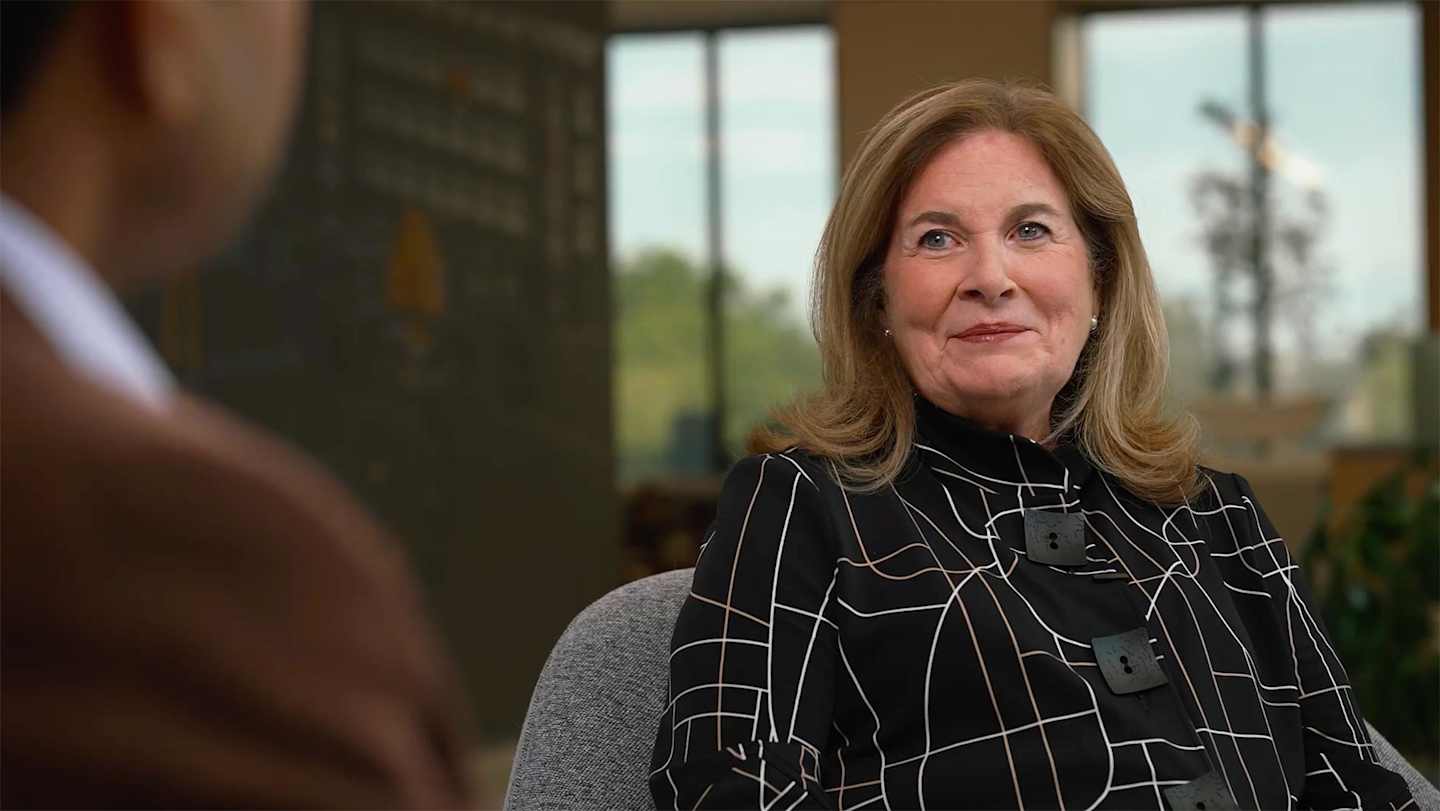The Fed's Precarious Path
The Federal Reserve (Fed) “took a big bite at the apple with a 50 basis point cut,” says a former Fed insider. Are we headed to a soft landing or is a recession still on the table?

With its first interest rate cut in four years on September 18, the Fed finally pivoted and said it is “recalibrating” its policy. In our latest webinar, Esther George, past president of the Federal Reserve Bank of Kansas City, shared her perspective on the Fed’s decision and on the overall health of the U.S. economy.
Listen to our conversation with Esther. Read key takeaways from the replay below.

Originally broadcast September 26, 2024
Key Takeaways
Edited excerpts from our conversation with Esther George.
Was the Fed sending a clear message that they’re comfortable with inflation?
I think that's exactly the message. We've been hearing over the past year or so that the Fed is looking for greater confidence that inflation is heading back toward their 2% target, that they wouldn't need to actually arrive at that destination, but they needed to know it would be sustainable in its direction of travel. So the 50 basis point cut was a pretty strong statement of confidence.
Does that mean the Fed is declaring victory over inflation?
The mandate they have is around price stability, and we heard for the past year that was what they’ve been focused on. They're now beginning to feel confident enough that they can focus on the other part of their mandate, which is the labor market.
Are we headed for a soft landing? Is a recession still a possibility?
We've heard a lot about a soft landing. I think when you see the Fed taking a 50 basis point cut, it’s a way to ensure a strong economy and the prospects for a soft landing are going to continue.
But of course, none of us can read that crystal ball outlook enough to know. When I look at the market expectations of recession probabilities, they're not insignificant, but they're also not terribly high. That's because today we're looking at a pretty good labor market. We're also looking at business investment that looks pretty good.
There are a lot of things going for the U. S. economy right now, and the Fed wants to stick a soft landing. Who doesn't hope that's the outcome they get?
How do you respond to criticism that the Fed tends to keep rates too high for too long or waits too long to cut?
Generally, history would suggest the real risk for the Fed is overdoing it; either it’s too long at a high rate or too high of a rate before it comes down.
There are a couple of things behind that. Having sat at that table, I can tell you that you’re working with a blunt instrument. A short-term interest rate that cannot be surgically applied to the U.S. economy means it will hit everyone, whether you're a borrower or a saver.
The other thing that happens is that this policy rate is transmitted with lags, and you don't know precisely the timing of those lags. What you do know is that you've been given a very specific mandate for price stability and maximum employment.
The Fed has been discussing how restrictive the policy has been, and they've been balancing this ever-present too-soon, too-late issue in hopes of minimizing any downside from that high interest rate.
Will the Fed need to consider the growing fiscal debt in its monetary policy?
The Federal Reserve, though generally very quiet about this issue, is careful not to overstep its job of setting monetary policy—it will take what it's handed in terms of fiscal policy. ... But the debt matters significantly to how the Fed thinks about adjusting policy rates. I would argue that with all the fiscal stimulus that came in with the deficit spending, the Fed has had to think about higher rates and where they are going to end up over the longer term.
What happens if the market demands higher Treasury yields?
Investors will, at some point, judge whether they are getting the return that they need relative to the risk, relative to the level of deficit spending going on. So the rate environment could put pressure on the central bank—will there be buyers of those bonds? … For me, it would be very much in focus, and I suspect other policymakers around the FOMC (Federal Open Market Committee) are thinking about what future interest rates might look like under different policies that could come about.
Does the Fed consider what's happening in the stock market when it’s setting policy?
If you were sitting around the FOMC table, one of the first things you would hear is the New York Fed desk staff talking about current financial conditions.
Sometimes people will ask me, "Oh, would you like to see the stock market do this? Are you trying to get that to happen?" Not explicitly, it’s not part of the Fed's mandate. The question is, where are those markets moving relative to the economy's fundamentals?
So, in addition to looking at financial conditions and how easy or tight they are, the Fed also looks at how stable the financial system is for the markets because that is table stakes for being able to conduct policy in a stable and effective way.
Does political pressure influence the Fed’s decisions?
Of course, my answer is no—that isn't in the DNA of the institution. You are focused on the long run and how devastating it would be if you got caught up in making a short-term decision.
The institution itself has long understood that effective monetary policy comes from making independent decisions around that policy while still being fully accountable to Congress.
What do you think is the single greatest influence on the Fed during this rate-cutting process?
There never is a single issue that affects the Fed because they must look at the entire context of the economy. For the committee though, I think it helps them to be labor-focused because they have a mandate. And they know, first and foremost, watching the labor market and watching price stability are the two things that they're fully accountable to the public for.
They watch how the consumer is faring. They also watch the outlooks for business investment and growth, which today look pretty good. They are always looking for where weakness is showing up to inform how they meet their two objectives.
Do you believe there are more rate cuts ahead?
I think if the FOMC sees a weakening in the labor market that concerns them, they could do more. I think if things stay as they are, they'll be happy to take a more gradual step down with 25 basis points.
Inflation in Focus
Get market updates, behavioral insights and investment ideas.
Debt securities issued by the U.S. Treasury and backed by the direct "full faith and credit" pledge of the U.S. government. Treasury securities include bills (maturing in one year or less), notes (maturing in two to 10 years) and bonds (maturing in more than 10 years). They are generally considered among the highest quality and most liquid securities in the world.
For bonds and other fixed-income securities, yield is a rate of return on those securities. There are several types of yields and yield calculations. "Yield to maturity" is a common calculation for fixed-income securities, which takes into account total annual interest payments, the purchase price, the redemption value, and the amount of time remaining until maturity.
American Century Investments prepared this summary based on its understanding of George’s presentation. There is no guarantee as to its accuracy or completeness.
The views expressed in this presentation are the speaker’s own and not necessarily those of American Century Investments. This presentation is for general information only and is not intended to provide investment, tax or legal advice or recommendations for any particular situation or type of retirement plan. Please consult with a financial, tax or legal advisor on your own particular circumstances.
Esther George is not affiliated with American Century Investments.
Investment return and principal value of security investments will fluctuate. The value at the time of redemption may be more or less than the original cost. Past performance is no guarantee of future results.